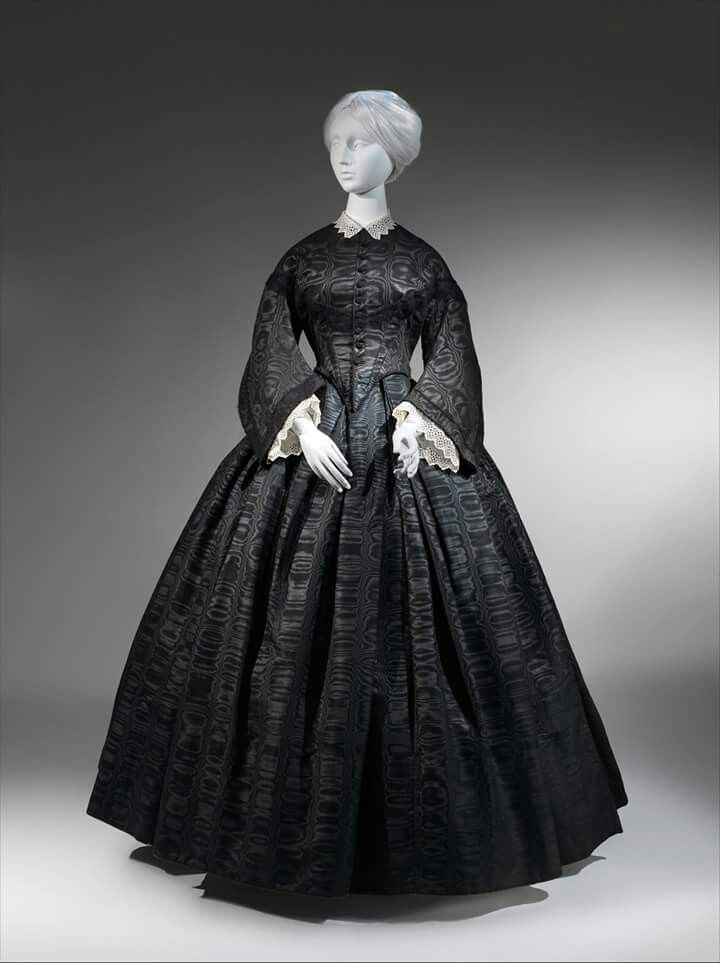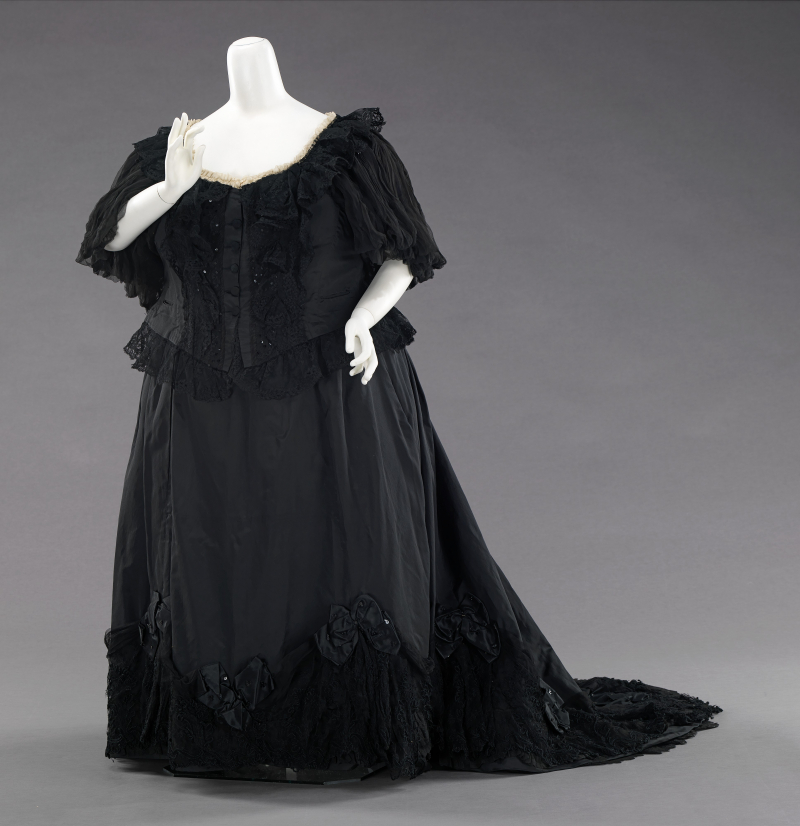Mourning Dress
People typically think of the Victorian era more than any other historical period when contemplating mourning attire. Even while it has been a staple of clothing for many years before, the Victorian era is probably best famous for it since Queen Victoria wore a mourning gown for forty years after her husband, Prince Albert, passed away. The Victorians considered wearing all black to be a sign of grief. But as with other things, Victorian mourning involved much more than just donning all black. Clothing defined phases of sadness without the person saying a single word thanks to different stages of grieving and distinct textiles for each step. But mourning in the Victorian era struck a fascinating mix between rigid regulations and free interpretation.
The stages of grieving include half mourning, first mourning, second mourning, third mourning, and intense grief (for widows only). Not everyone participated in each level, and not everyone followed the steps in a strict, chronological manner. The steps listed below are meant to highlight the particular selection of materials, hues, and trimmings (or lack thereof) that have been considered acceptable. However, it is not a rigid set of steps that every Victorian took. Even though long-term mourning dress seems strange to us today, Victorian society was dominated by it. Additionally, there were both positive and negative responses to mourning attire. On the one hand, mourning attire encouraged acknowledging loss as a means of grieving.












